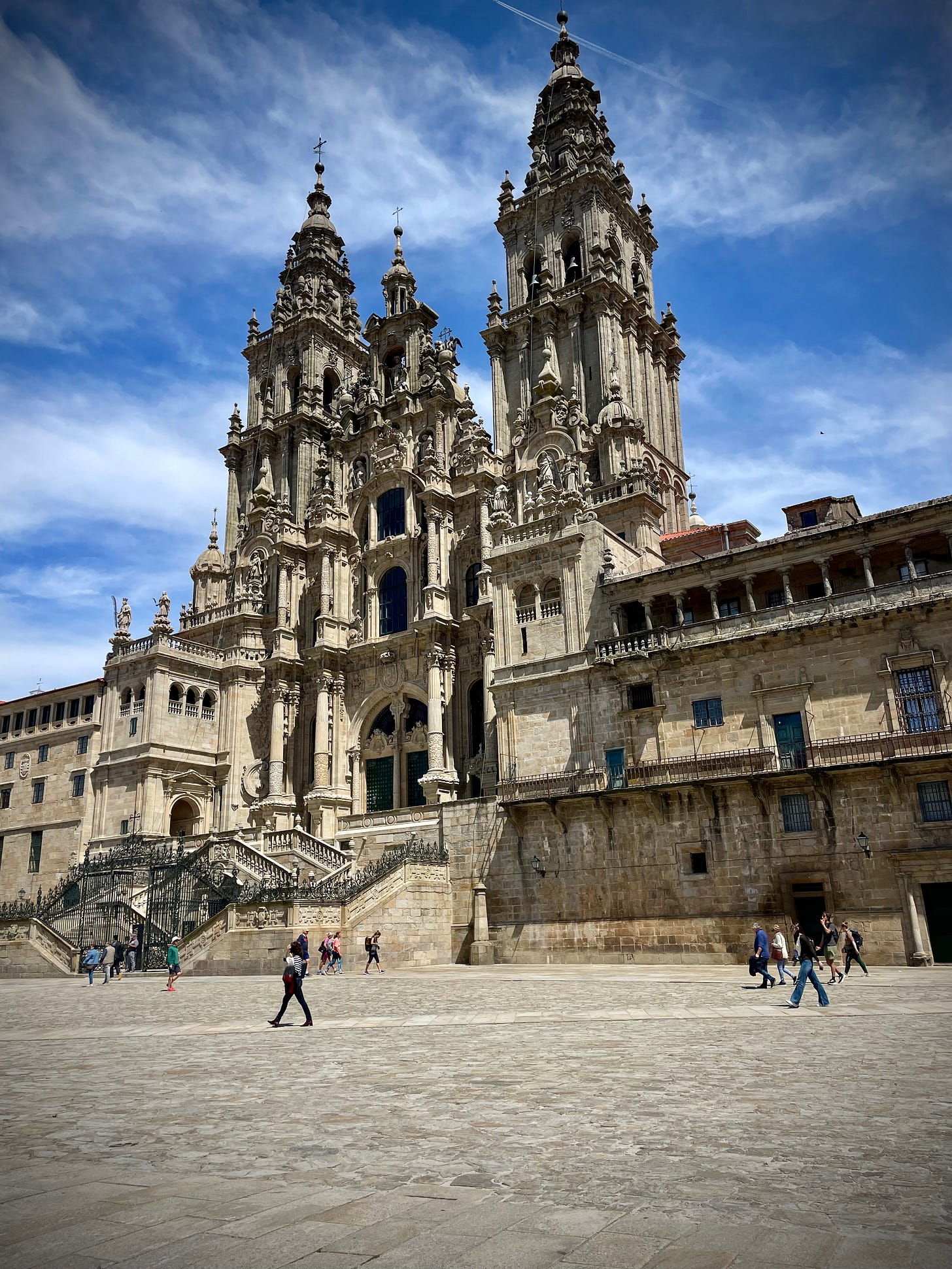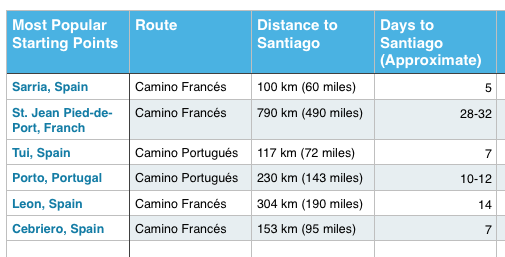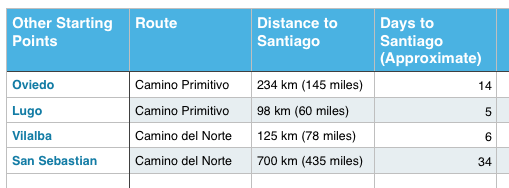015: Choosing Your Camino de Santiago Route (Part 1 of 4)
A practical guide to finding your path without losing your mind.
Hello Camino friends! Here’s what’s in this issue:
🎒 Choosing Your Camino Route: The start of my 4-Part Series
📸Scenes from the Camino
📖 What I’m Reading
🥾Let me help you plan your Camino.
Are you getting my posts directly to your email or Substack feed? If not, click here to join us.
❓Not even sure what the Camino de Santiago is? Start here.
🤔Heard of the Camino but not sure if it’s for you? Read this.
Let’s get started!
🎒Choosing Your Camino Route: A 4-Part Series
When I walked my first Camino in 2012, I thought “the Camino” was a single route with a specific starting point and ending point. So I headed to St-Jean-Pied-de-Port to walk the Camino Francés. Destination: Santiago de Compostela.
Within a week, I’d met people who had walked out their door in France a month earlier—or three years earlier—in order to start their journeys. One of the people I became closest to in that first week ended his Camino just four days after I met him, when we were hundreds of miles from Santiago de Compostela—and that was his intention. Others were walking beyond Santiago—to the ocean at Finisterre or Muxia.
Back in 2012, I was surprised by how many ways there were to walk the Camino. Now, with sites like Gronze.com showing dozens of routes, it’s easy to get overwhelmed before you even buy your plane ticket. But don’t worry—we’ll take this one step at a time, just like the Camino itself.
Today I begin a four-part series in which I’ll cover ten questions that will help you decide which Camino route is best for you. But if this starts to feel overwhelming, just pick a route and go. The Camino has a way to giving you exactly what you need.
1) Do you want to end in Santiago de Compostela?
“Isn’t that the point?” some of you may ask. Historically, yes—it was the goal of medieval pilgrims to reach Santiago de Compostela, but today not everyone ends there.
Some Europeans walk 1-2 weeks each year—starting from their home country and returning each year to pick up where they left off. It may take them 5-10 years to reach Santiago de Compostela, but it’s what works best for them for a variety of reasons.
Others of us who live in Europe (myself included) do a week on a Camino each year and, as we’ve been to Santiago de Compostela numerous times, we have no need to end our Camino there every time.
So who ends their Camino in Santiago de Compostela? About 500,000 people every year! People coming from father away — like the US, Canada, Australia, New Zealand— are more likely to walk a Camino with the goal of Santiago de Compostela.
However, there are some who travel great distances who just want “a taste” of the Camino—and the destination doesn’t matter. My father was one of those back in 2019. We walked a week together from Pamplona to Santo Domingo de la Calzada. He got hooked and now does a week on the Camino every year. (He’ll be 78 in August.)
If your end goal is Santiago de Compostela, there are four routes that will get you there: the Camino Francés, the Camino Portugués, the Camino Ingles, and the Via de la Plata. There are additional routes that people think of as ending in Santiago de Compostela (the Camino Primitivo, the Camino del Norte, the Camino Invierno) but in order to so, all of those eventually meet with one of the first four.
2) How far do you want to walk each day?
Most Camino pilgrims walk between 20 and 25 km per day (12-15 miles). I’ve had clients do less and have met pilgrims who do more. I don’t recommend the latter—this isn’t an experience that should be rushed.
I like to be finished with my walk by 1 or 2pm to take advantage of the menú del día and to have plenty of time to rest, do laundry, shower, get snacks for the next day, do a little site seeing and relax on a terraza with new friends. (Yes, that’s about 2 miles per hour. I wrote about that in this post.)
If you want to walk 20km or less per day, I recommend the Camino Francés or the Camino Portugués as these routes have the most infrastructure and accommodation options. Other routes may require you to walk longer distances some days to get to the next accommodation (i.e. there are none in between).
If you are okay with the possibility of having to walk more than 20km per day, all routes are open to you.
3) How many days do you want to walk?
Below I’ve listed some starting points on various routes and the approximate days to get there. These are only walking days. Will you take rest days? If so, factor those in. And don’t forget that it can take a day or longer to get to your chosen starting point—there may be only one train per day or a bus to that town only a few days per week. So the question of how many days you want to walk is only part of what needs to be considered when planning your entire Camino trip.
No matter where you start, how far you go, or where you end up, the Camino has a way of meeting you exactly where you are. These first three questions are just the beginning—meant to get you thinking, not to box you in. In the next post, we’ll explore what kind of Camino experience might call to you—but remember, no route is absolutely perfect. And that’s part of the beauty. Don’t let the planning keep you from going. Just pick a path and start walking.
With love,
Rebecca
P.S. For Part 2 of this series, click here.
📸Scenes from the Camino
For some people, a Camino route is not chosen with any of the above questions. Instead, they ask, “Where can I eat well?”
I don’t plan my Caminos in that much detail—but even so, I’ve still enjoyed plenty of great meals along the way.
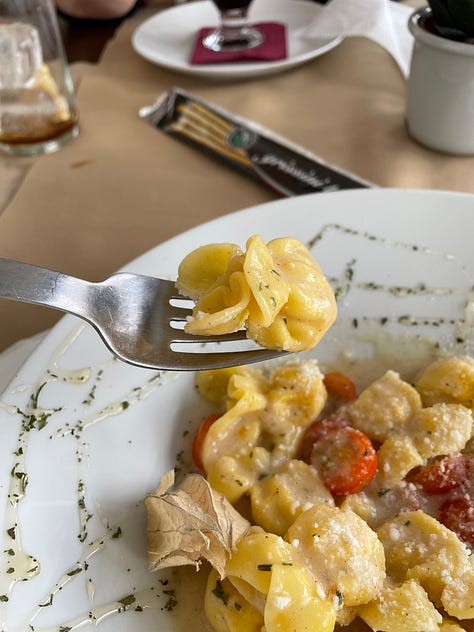
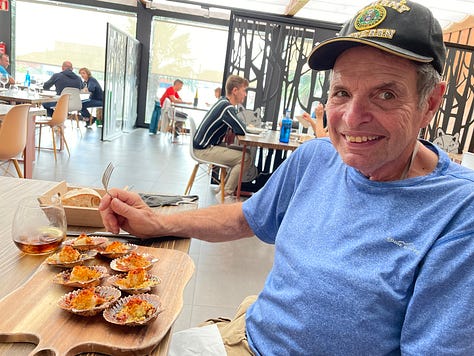
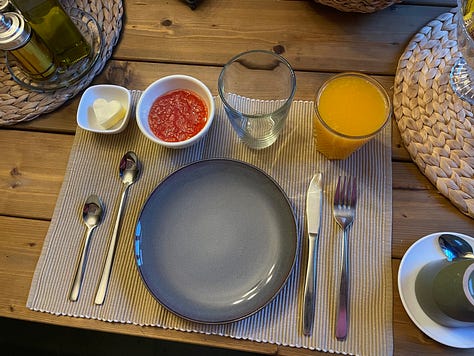


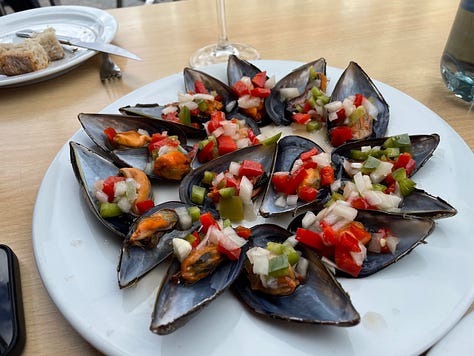
📖What I’m Reading
One of the many benefits of living in Spain is coming across older Camino guides and memorabilia. So when I saw this guide to the Camino— published in 1989—I knew I had to have it in my collection.
In the section “How to Plan Your Pilgrimage,” the author Jaime Cobreros explains that you can do the Camino by horse, by bike, or on foot, but “the transcendant elements that the Camino offers us . . . will pass by us more fleetingly and at a faster pace” if we do it by car.
“In any case, the important thing is to set out on the Camino.”
My thoughts exactly. Don’t get bogged down—the goal is to get to your starting point.
Don’t let overplanning keep you from getting there.
🥾Ready to start planning your Camino?
Rebecca Weston is an American who walked her first Camino in 2012.
She helps people 45 and over plan their own walks on the Camino de Santiago through her business The Camino Calls.
She and her husband live in Spain in a town of 6500 people on the Camino del Norte. She’s walked more than a dozen Caminos, spent many days volunteering along the trail, and if she’s not walking one now, she’s planning the next—and would love nothing more than to help you plan yours, too.


